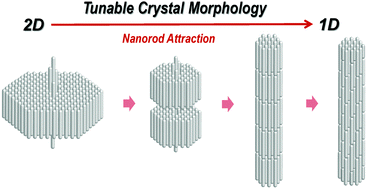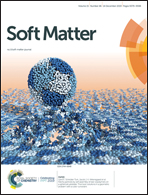Depletion-driven morphological transitions in hexagonal crystallites of virus rods†
Abstract
The assembly of nanometer-sized building blocks into complex morphologies is not only of fundamental interest but also plays a key role in material science and nanotechnology. We show that the shape of self-assembled superstructures formed by rod-like viruses can be controlled by tuning the attraction via the depletion interaction between the rods. Using non-adsorbing polymers as a depleting agent, we demonstrate that a hierarchical unidimensional self-organization into crystalline clusters emerges progressively upon increasing depletion attraction and enhanced growth kinetics. We observe a polymorphic change proceeding from two-dimensional (2D) crystalline monolayers at weak depletion to one-dimensional (1D) columnar fibers at strong depletion, via the formation of smectic fibrils at intermediate depletion strength. A simple theory for reversible polymerization enables us to determine the typical bond energy between monomeric units making up the smectic fibrils. We also demonstrate that gentle flow-assistance can be used to template filament-like structures into highly aligned supported films. Our results showcase a generic bottom-up approach for tuning the morphology of crystalline superstructures through modification of the interaction between non-spherical building blocks. This provides a convenient pathway for controlling self-organization, dimensionality and structure-formation of anisotropic nanoparticles for use in nanotechnology and functional materials.



 Please wait while we load your content...
Please wait while we load your content...